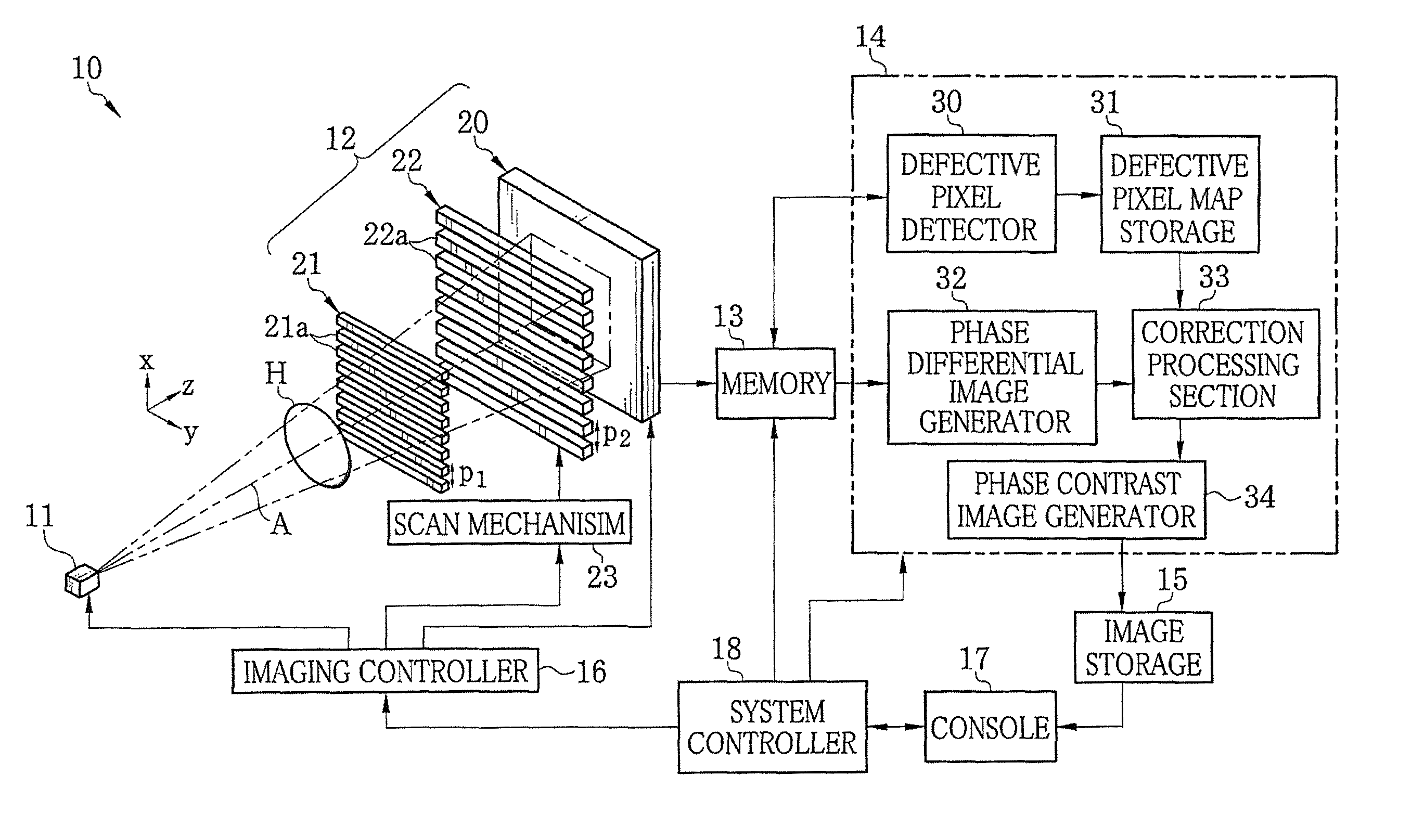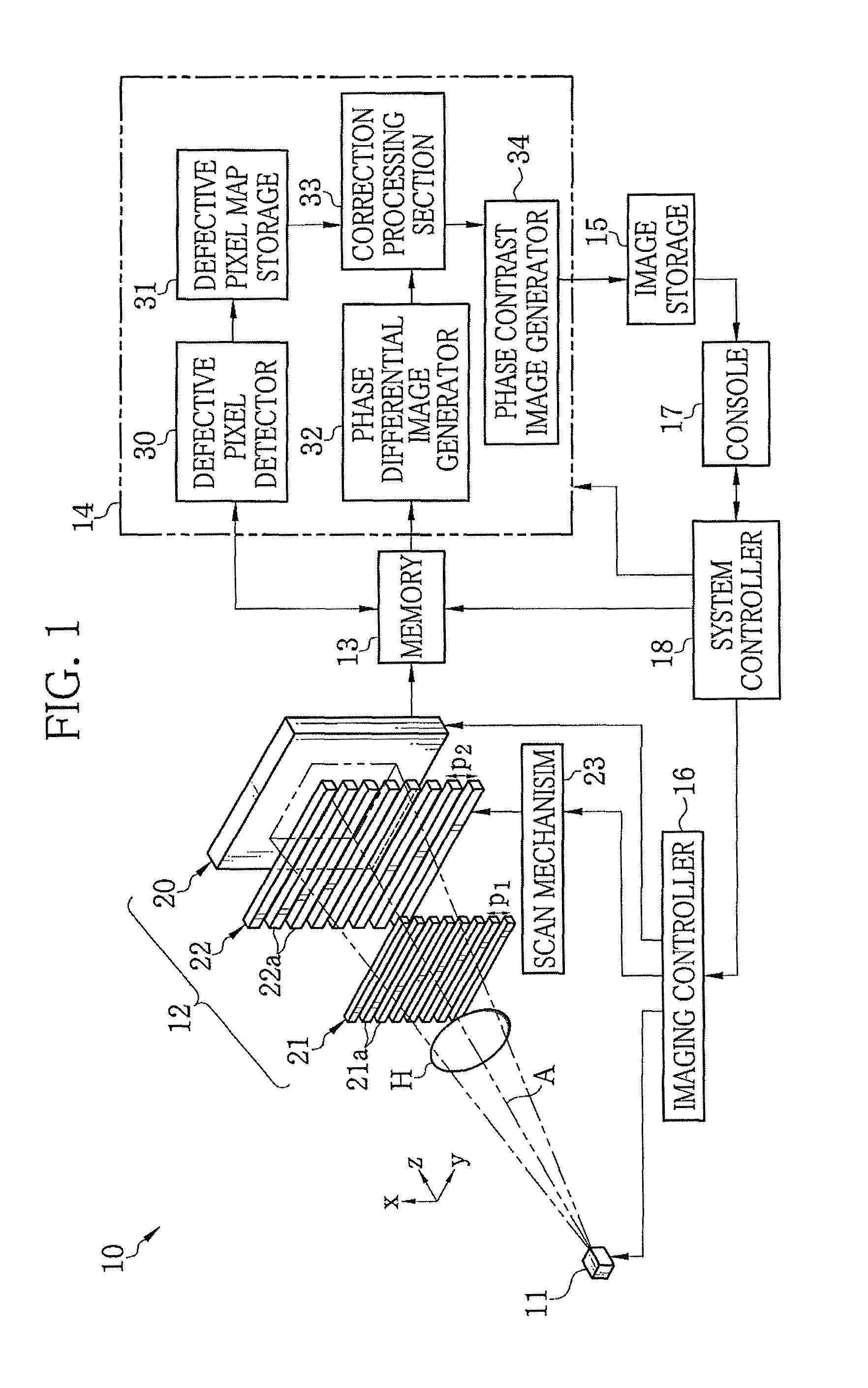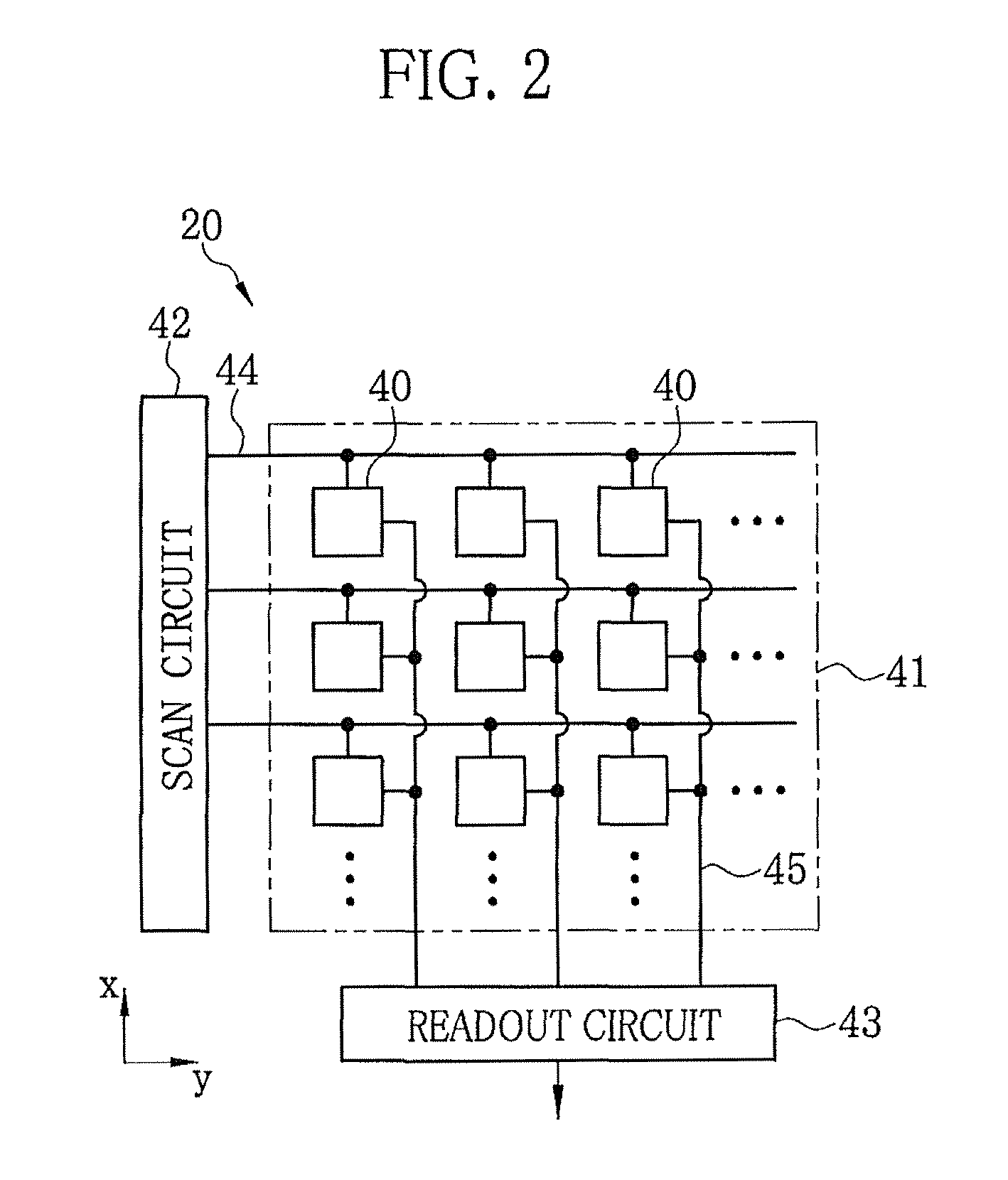Radiation imaging system and apparatus and method for detecting defective pixel
a technology of diffraction grating and pixel, which is applied in the direction of material analysis using wave/particle radiation, instruments, applications, etc., can solve the problems of defective pixels, high production error, and inability to obtain sufficient contrast in the x-ray absorption image of living soft tissue or soft materials, etc., to achieve high accuracy
- Summary
- Abstract
- Description
- Claims
- Application Information
AI Technical Summary
Benefits of technology
Problems solved by technology
Method used
Image
Examples
first embodiment
[0046](First Embodiment)
[0047]In FIG. 1, an X-ray imaging system 10 according to a first embodiment of the present invention is composed of an X-ray source 11, an imaging unit 12, a memory 13, an image processor 14, an image storage 15, an imaging controller 16, a console 17, and a system controller 18. The X-ray source 11 applies X-ray to an object H. The imaging unit 12 is opposed to the X-ray source 11 and detects the X-ray, emitted from the X-ray source 11 and passed through the object H, to generate image data. The memory 13 stores the image data read from the imaging unit 12. The image processor 14 processes multiple frames of image data stored in the memory 13 to generate a phase contrast image. The image storage 15 stores the phase contrast image generated by the image processor 14. The imaging controller 16 controls the X-ray source 11 and the imaging unit 12. The console 17 is composed of an operating section, a monitor, and the like. The system controller 18 controls the ...
second embodiment
[0123](Second Embodiment)
[0124]Next, a second embodiment of the present invention is described. The second embodiment is a variant of the detection process of the defective pixel performed by the defective pixel detector 30. In this embodiment, the correction processing section 33 performs the detection process following a flowchart shown in FIG. 12.
[0125]First, as with the first embodiment, when the calibration is instructed (“YES” in S20), the FPD 20 obtains the image data (the dark image) in a state that the X-ray irradiation from the X-ray source 11 or X-ray exposure is prohibited. The obtained dark image is stored in the memory 13 (S21). The defective pixel detector 30 reads the dark image stored in the memory 13. The defective pixel detector 30 judges a pixel having the pixel data (pixel noise value) larger than an allowable value as the defective pixel (S22).
[0126]Next, the fringe-scanning imaging is performed in a state that the X-ray having predetermined intensity is emitte...
third embodiment
[0133](Third Embodiment)
[0134]In the above embodiments, the second absorption grating 22 is provided independently of the FPD 20. With the use of an X-ray detector disclosed in U.S. Pat. No. 7,746,981 corresponding to Japanese Patent Laid-Open Publication No. 2009-133823, the second absorption grating 22 can be eliminated. The X-ray image detector is a direct conversion type X-ray image detector provided with a conversion layer and charge collection electrodes. The conversion layer converts the X-ray into electric charge. The charge collection electrodes collect the converted electric charge. The charge collection electrode in each pixel is composed of linear electrode groups arranged to have mutually different phases. Each linear electrode group is composed of linear electrodes arranged at a predetermined period and electrically connected to each other. The charge collection electrode constitutes the intensity modulator.
[0135]In FIG. 14, the X-ray image detector (FPD) of this embod...
PUM
 Login to View More
Login to View More Abstract
Description
Claims
Application Information
 Login to View More
Login to View More - R&D
- Intellectual Property
- Life Sciences
- Materials
- Tech Scout
- Unparalleled Data Quality
- Higher Quality Content
- 60% Fewer Hallucinations
Browse by: Latest US Patents, China's latest patents, Technical Efficacy Thesaurus, Application Domain, Technology Topic, Popular Technical Reports.
© 2025 PatSnap. All rights reserved.Legal|Privacy policy|Modern Slavery Act Transparency Statement|Sitemap|About US| Contact US: help@patsnap.com



